The National Center for Earth and Space Science Education (NCESSE) is proud to introduce the SSEP National Step 2 Review Board for the flight experiment opportunity on STS-135—the final flight of Space Shuttle Atlantis, and of the U.S. Space Shuttle Program. Listed below are the 14 Board Members—scientists, engineers, and science educators from academia, federal agencies, and national science education non-profits. On May 18 and 19, 2011, the Board met at the Carnegie Institution of Washington to review 31 finalist proposals for student flight experiments submitted from across the network of 11 communities participating in the Student Spaceflight Experiments Program on STS-135.
For SSEP on STS-135, a total of 11,000 grade 5-12 students in the 11 participating communities were given the opportunity to design real experiments to fly aboard Shuttle Atlantis. There were a total of 530 proposals submitted by student teams, with 207 deemed appropriate for review by SSEP Step 1 Review Boards in the communities. Each of these local Boards selected up to 3 finalist proposals for submission to the SSEP National Step 2 Review Board.
For Step 2 review, the Board Members were divided into 3 teams, each comprised of both researchers and science educators, and each team responsible for review of proposals from 3 or 4 SSEP communities. Board Members selected 11 flight experiments, one for each community, and spent a great deal of time providing thoughtful comments for all 31 proposals, which were sent to the proposing student teams by NCESSE. The review went well beyond what is typical of reviews for professional research proposals given there was a deep recognition that the process, and the comments back, were vitally important teachable moments for the student researchers that worked so hard on their proposals. Through SSEP, we want to immerse students in real science. The review process is very much a part of real science, and that process therefore needs to be transparent, and a learning experience.
NCESSE reviewed all comments from the Step 2 Review Board to assess if there were any outstanding questions that needed to be addressed by the selected student teams, and on May 27, 2011, NCESSE formally announced the selected flight experiments.
To the thousands of students that participated in SSEP on STS-135, regardless of whether your proposal was selected for flight, or it even went before the Review Boards, you need to know that you were given the opportunity to be real scientists and you answered the call. We hope that this experience got you excited about science, technology, engineering, and mathematics fields, and propels you to seek out new opportunities where you can be curious and take ownership in journey. (You know … SSEP is about to start normal operations on the International Space Station.)
So recognize that YOUR COMMUNITY now has an experiment aboard the final flight of the U.S. Space Shuttle Program, that you were part of this historic adventure, and now you and your community can rally around the flight experiment and root for its success. Go team!
The SSEP National Step 2 Review Board for STS-135—
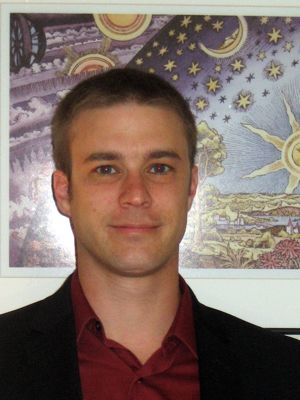 1. Dan Crooks
1. Dan Crooks
National Institutes of Health / National Institute of Child Health & Human Development
Dan Crooks is a pre-doctoral fellow at the National Institute of Child Health and Human Development, and is finishing work on a Ph.D. in Biochemistry at Georgetown University. He completed a B.A. in Molecular Biology, and an M.S. in Environmental Toxicology at the University of California at Santa Cruz, where he developed an interest in the roles of metals in cellular processes and in human diseases. Dan is currently performing laboratory research at the NIH on the molecular mechanisms of cellular iron homeostasis using mammalian red blood cell development and a hereditary human muscle disease as model systems. In the future, he plans to pursue questions on the tissue specificity of human diseases as an independent scientific investigator.
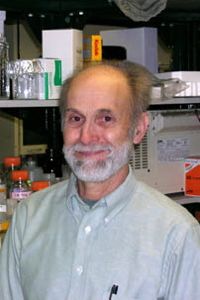 2. Dr. Robert Donaldson
2. Dr. Robert Donaldson
George Washington University
Prof. Robert P. Donaldson is a Professor of Biology at the George Washington University, and the Director of the GW Howard Hughes Medical Institute for Undergraduate Education in Computational Molecular Biology. His main research interest is the exploration of cellular processes, especially peroxisomes, subcellular compartments that house important functions for eukaryotic organisms such as yeasts, plants, and animals. In humans peroxisomes are responsible for the oxidation of certain dietary hydrocarbons and several human diseases result from genetic defects in peroxisomal function.
3. Dr. Broderick E. Eribo
Howard University
Dr. Broderick Eribo is a microbiologist with research interest in the area of applied and environmental microbiology. His current research focuses on the production of biodegradable polyester plastics from vernonia galamensis seed oil. He teaches General Microbiology, Pathogenic Bacteriology, Food Microbiology and Environmental Microbiology at both graduate and undergraduate levels at Howard University.
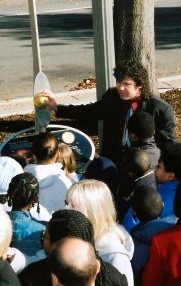 4. Dr. Jeff Goldstein
4. Dr. Jeff Goldstein
National Center for Earth and Space Science Education
Dr. Jeff Goldstein is the creator of SSEP, and its Program Director. He is also the Center Director for the National Center for Earth and Space Science Education (NCESSE). Jeff is a nationally recognized science educator, and planetary scientist, who has dedicated his career to the public understanding of science and the joys of learning. He oversaw the creation of the Center’s national science education initiatives, including the Voyage National Program. He led the inter-organizational team that permanently installed the Voyage model Solar System on the National Mall in Washington, DC. He is a blogger at the Huffington Post, and writes Blog on the Universe. His planetary science research includes the development of techniques for measuring global winds on other planets using large telescopes on Earth. His research has produced the first direct measurement of the global winds above the clouds on Venus, and the first measurement of the global winds on Mars.
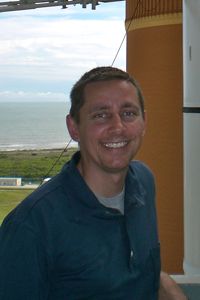 5. Michael Hulslander
5. Michael Hulslander
Smithsonian National Air and Space Museum
Michael is responsible for science education at the Smithsonian’s National Air and Space Museum. He also manages the How Things Fly gallery, Moving Beyond Earth gallery, the Public Observatory Project and the Explainers Program. How Things Fly teaches visitors about the science of flight. Moving Beyond Earth is an immersive exhibition placing visitors “in orbit” during the shuttle and space-station era. At the Public Observatory visitors explore craters on the Moon, spots on the Sun, the phases of Venus, and other wonders of the universe using a 16-inch telescope. The Explainers Program gives high school and college students the chance to work at the National Air and Space Museum. Michael has worked in museums and zoos for more than 25 years, researching, writing, presenting and evaluating science programs for school groups, families and the general public.
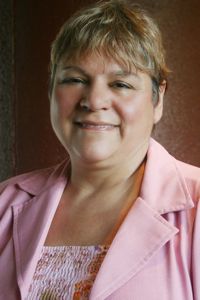 6. Dr. Rosemarie Hunziker
6. Dr. Rosemarie Hunziker
National Institutes of Health
Dr. Rosemarie Hunziker is the Program Director of the Division of Discovery Science and Technology in the National Institute of Biomedical Imaging and Bioengineering at the National Institutes of Health. Her current research concentrates on investigating technologies to develop functional cell, tissue, and organ substitutes to repair, replace, or enhance biological function either in vivo or in vitro. This multidisciplinary field draws upon and integrates advances in biomaterials, cell and developmental biology, physiology, high throughput assay development, imaging, computational modeling, bioreactor design, and novel engineering methods.
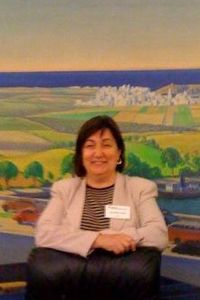 7. Maureen Kerr
7. Maureen Kerr
Smithsonian National Air and Space Museum
Maureen Kerr is the Chair of the Education Division at the Smithsonian National Air and Space Museum. In this position, Kerr oversees the education programs at the National Mall Building in Washington, DC and the Steven F. Udvar-Hazy Center in Chantilly, VA, as well as electronic outreach with national and international audiences. The Education Division provides direct programming to more than 600,000 participants, annually. Kerr received a Masters of Arts in science education from the University of New Mexico and a Bachelor of Arts in psychology from the University of Maryland.
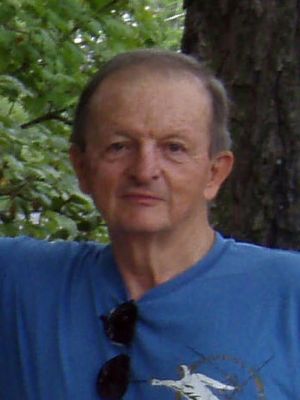 8. Dr. David Livengood
8. Dr. David Livengood
Dr. David Livengood is a biophysicist with a Ph.D. in Physiology. He has an extensive research background in biophysics in institutions such as the University of Maryland School of Medicine in Baltimore, Maryland, and the Armed Forces Radiobiology Research Institute in Bethesda, Maryland, where he served as the chair of the Physiology Department and the Applied Cellular Radiobiology Department.
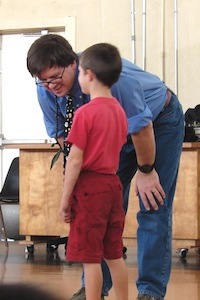 9. Dr. Tim Livengood
9. Dr. Tim Livengood
National Center for Earth and Space Science Education
Dr. Tim Livengood is a senior advisor to SSEP, and Senior Research Scientist at the National Center for Earth and Space Science Education, and works at NASA’s Goddard Space Flight Center. Tim is a presenter and team leader for the Center’s public and school programs and has visited hundreds of classrooms. Behind the scenes, he creates new hands-on activities, and writes clear explanations of the background science, for the Center’s grade K-12 compendia of lessons. Tim also leads workshops for teachers around the nation on the lessons. Tim’s scientific field is infrared spectroscopy of planetary atmospheres, to measure composition, temperature, and wind velocity. His research includes everything in the Solar System with a significant atmosphere. He is a co-investigator on the EPOCh investigation of NASA’s EPOXI mission, and is the education and public outreach team leader for EPOCh.
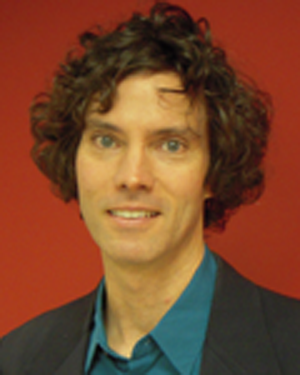 10. Dr. Peter Sunderland
10. Dr. Peter Sunderland
University of Maryland
Dr. Peter Sunderland is an Associate Professor, Department of Fire Protection Engineering, and Affiliate Assistant Professor, Department of Mechanical Engineering, University of Maryland, College Park. His research interests include combustion and fire protection, including soot formation and oxidation, microgravity combustion, hydrogen flames, laminar diffusion flames, vehicle fires, and diagnostics development. He is a former Staff Scientist and Research Associate at the National Center for Microgravity Research and National Research Council, NASA Glenn Research Center, Cleveland, Ohio.
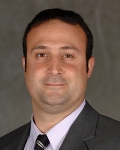 11. Dr. Alex Theos
11. Dr. Alex Theos
Georgetown University
Prof. Alex Theos is an Assistant Professor at the Department of Human Science in the School of Nursing And Health Studies at Georgetown University. His research interests include the role of protein complexes in the biogenesis of specialized organelles, focusing on the intracellular membrane trafficking pathways. Currently, his research is focused on understanding the cell biology of the gpNMB gene product, problems with which cause problems in mice, such as pigmentary glaucoma and bone defects.
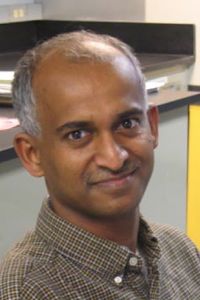 12. Dr. Hemayet Ullah
12. Dr. Hemayet Ullah
Howard University
Prof. Hemayet Ullah is an Assistant Professor at the Department of Biology in Howard University. His research interests are in the field of plant biology, especially plant cell signaling, environmental stress physiology, and plant molecular and cellular biology, with current emphasis on unraveling the signaling pathways of extracellular signals inside the cell.
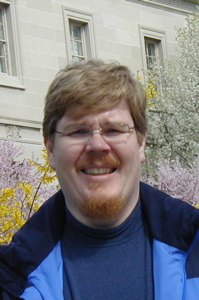 13. Dr. Harri Vanhala
13. Dr. Harri Vanhala
National Center for Earth and Space Science Education
Dr. Harri Vanhala is the Program Manager for SSEP, and a science researcher at the National Center for Earth and Space Science Education. His research focuses on the use of computer simulations to investigate the origin of the Solar System, and development of computer models to investigate the properties of present-day planets. His science education activities include leading multiple Journey through the Universe National Teams to under-served communities across the U.S., and managing the MESSENGER Educator Fellowship Program, a nationwide professional development initiative for educators in support of NASA’s MESSENGER mission to Mercury, and Family Science Night at the Smithsonian National Air and Space Museum.
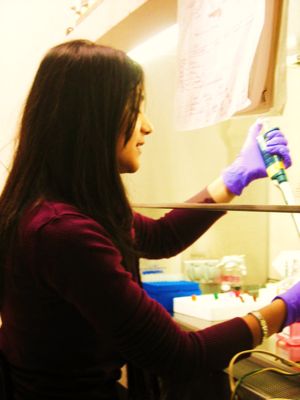 14. Dr. Shehla Wynne
14. Dr. Shehla Wynne
Georgetown University
Dr. Shehla Wynne has recently completed her Ph.D. in Biochemistry and Molecular Biology at Georgetown University. For her Ph.D. thesis project she investigated the mechanism of induction of the proteins p75NTR and Nag-1 by non-steroidal anti-inflammatory drugs in prostate cancer cells, and determined the functional consequence of such induction in cancer cell migration and metastasis. Prior to enrolling in graduate school, Dr. Wynne was a lab manager and research assistant at Lombardi Comprehensive Cancer Center in Washington, DC. Her work at Lombardi constituted a case-control study comparing individual sensitivity to mutagenic compounds as a risk marker for breast cancer, with population and hospital controls.
